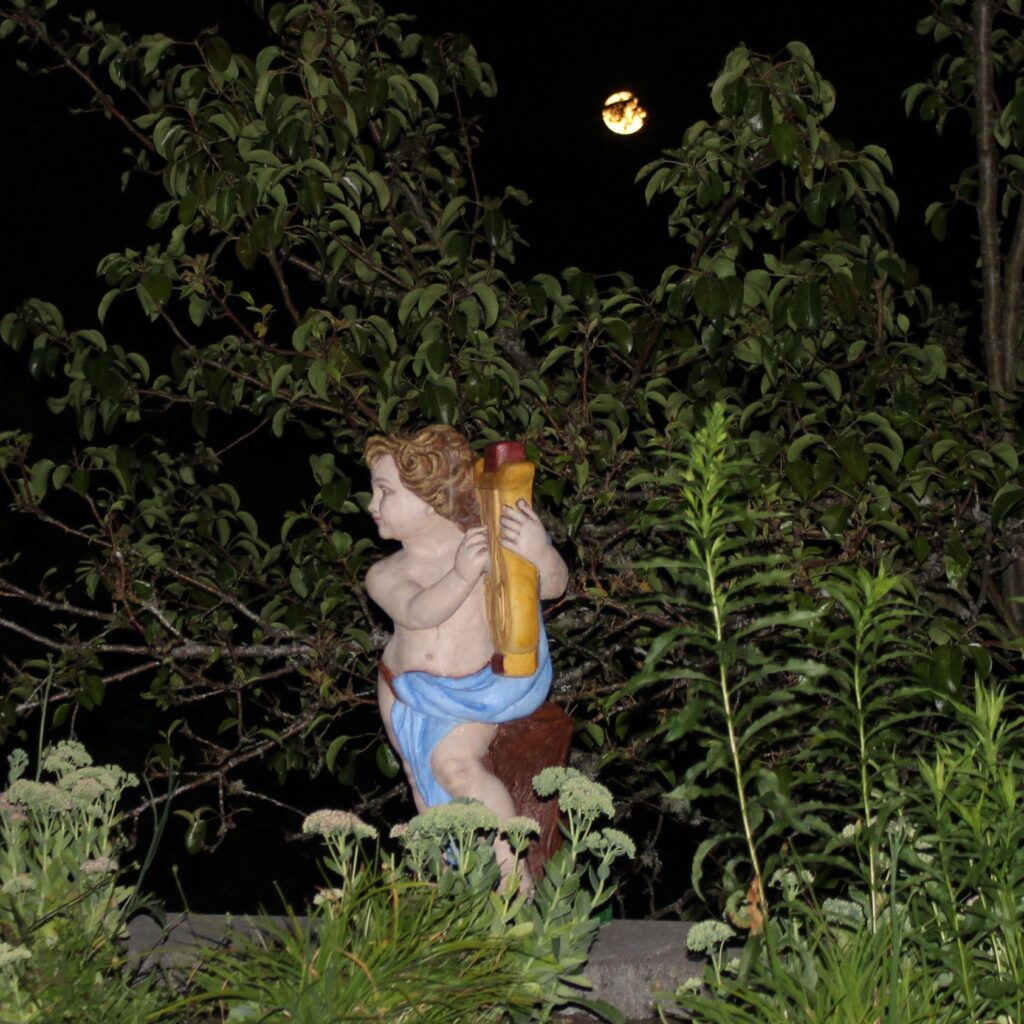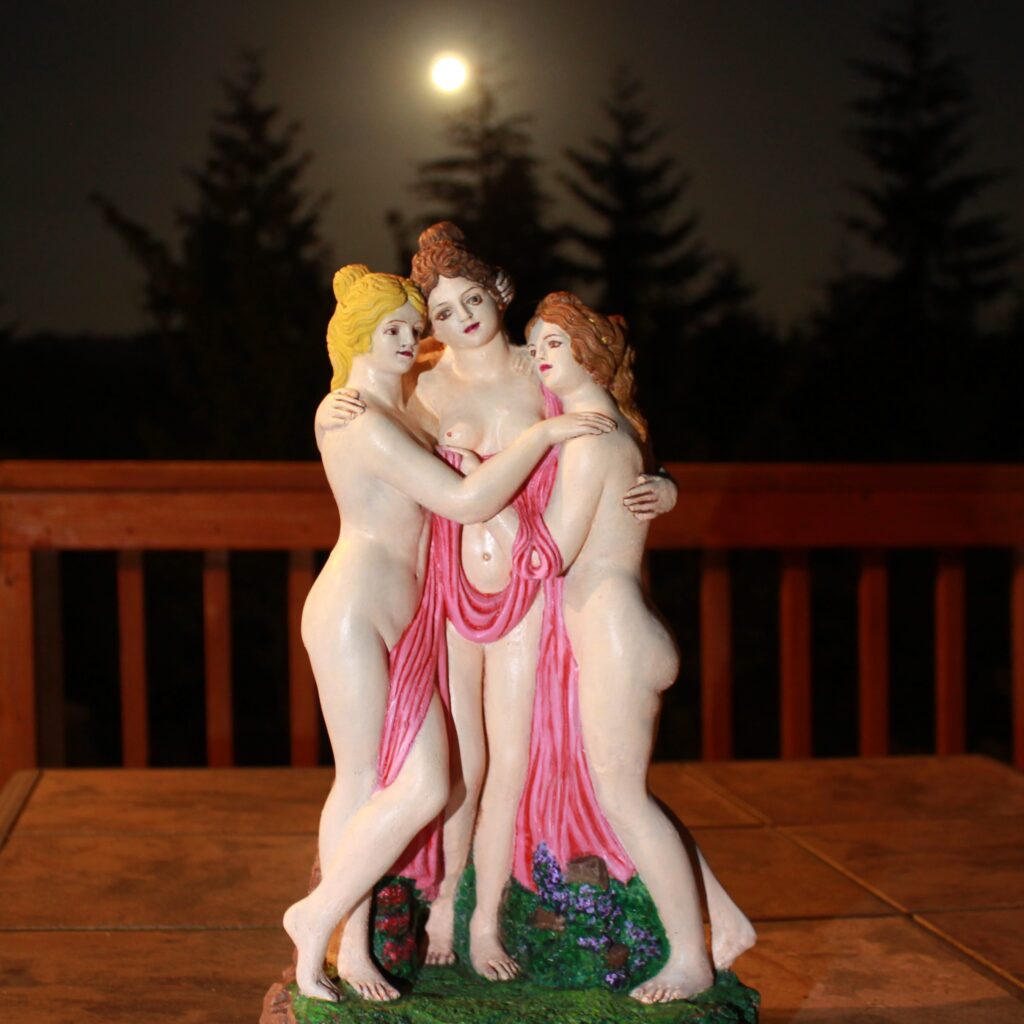
Taking pictures of statues under the moon is a challenging but enjoyable way to spend an evening. I was trying to capture the full moon over Apollo. When I finally caught it, there was a tip of a branch just blocking it. It seems like Apollo was not cooperating with this project. Maybe he was jealous of Ted who was holding flashlights and fetching chairs and being sweet to me like always. Anyway, after may tries and a lot of goofs I managed to get a few good shots. The rest of this post is going to be about photography techniques, so if you are not interested in that subject, it is okay to skip this part. For people who want to know how I did it, I will be happy to share what I learned.
The tricky part is making the camera focus on both the foreground and the background at the same time. It’s extra tricky to do it after dark. I didn’t use special equipment, or edit the photos. I set up the camera at an optimal distance, locked in the focus, adjusted the ISO, and controlled the lighting.

Equipment
I used an ordinary retail camera from Canon with a tripod and a trigger button on a wire. I set it up before dark. I made sure the battery was charged and I had flashlights, insect repellent, etc. It’s important to be prepared ahead of time, because the moon only sits at the horizon for a few minutes.
Focus
Auto focus (AF) doesn’t work after dark without a flash. I took some test shots in AF mode with the flash on. Once I was satisfied with the focus, I switched to manual focus (MF) and turned off the flash.
Once the focus is locked in, it will stay focused as long as the camera stays the same distance from the statue. The camera may be moved to the left or the right in an arc and it won’t lose focus as long as you point it at the same statue.
Distance
I set up the tripod about 15 feet away from Apollo. I chose the distance from the statue by experimenting with test shots. The issues are perspective and focus. The closer you get to the statue, the bigger it looks with respect to the moon. But also, the closer you get to the foreground object, the blurrier the background gets, so it’s a tradeoff.
Lighting
I experimented with ambient lighting, by which I mean I switched the porch light on and off. I also used a small flashlight with an adjustable beam shined at an angle through a scarf to get the kind of soft lighting that is flattering to deities at night.
ISO
It is not necessary to be too technical with this information. Just experiment with the settings. I had the best luck with 400, 800 and 1600. The auto mode usually chose 3200, but the moon looked blurred at that setting.

